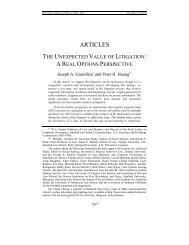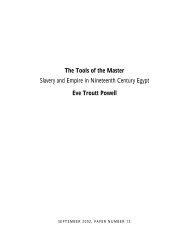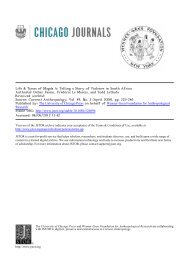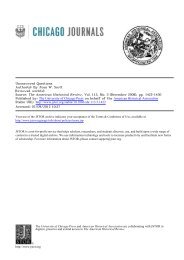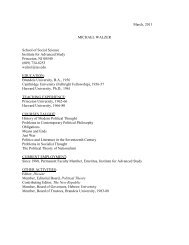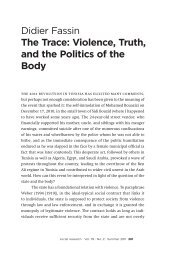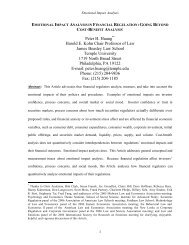Secure Implementation Experiments: Do Strategy-proof Mechanisms ...
Secure Implementation Experiments: Do Strategy-proof Mechanisms ...
Secure Implementation Experiments: Do Strategy-proof Mechanisms ...
You also want an ePaper? Increase the reach of your titles
YUMPU automatically turns print PDFs into web optimized ePapers that Google loves.
ABSTRACT<br />
<strong>Strategy</strong>-<strong>proof</strong>ness, requiring that truth-telling is a dominant strategy, is a standard<br />
concept used in social choice theory. Saijo et al. (2003) argue that this concept has serious<br />
drawbacks. In particular, many strategy-<strong>proof</strong> mechanisms have a continuum of Nash<br />
equilibria, including equilibria other than dominant strategy equilibria. For only a subset of<br />
strategy-<strong>proof</strong> mechanisms do the set of Nash equilibria and the set of dominant strategy<br />
equilibria coincide. For example, this double coincidence occurs in the Groves mechanism when<br />
preferences are single-peaked. We report experiments using two strategy-<strong>proof</strong> mechanisms.<br />
One of them has a large number of Nash equilibria, but the other has a unique Nash<br />
equilibrium. We found clear differences in the rate of dominant strategy play between the two.<br />
Journal of Economic Literature Classification Number: C92, D71, D78, and H41.<br />
Keywords: Experiment, Laboratory, <strong>Secure</strong> <strong>Implementation</strong>, Groves-Clarke, Pivotal,<br />
Learning<br />
2




